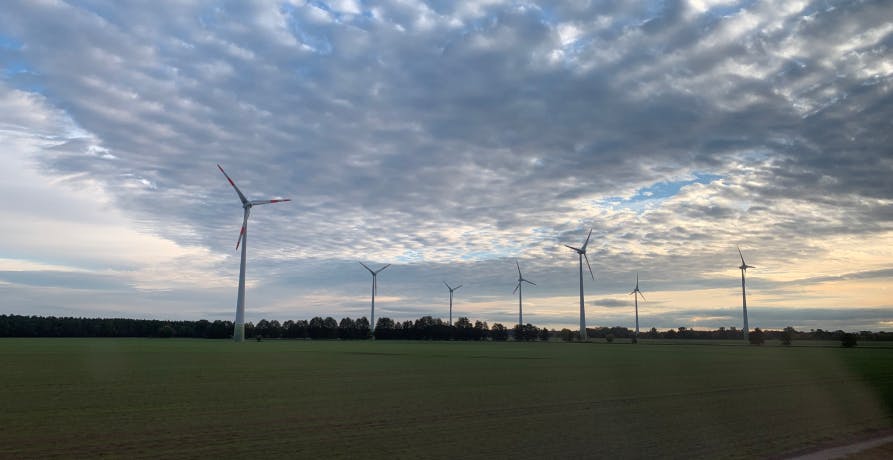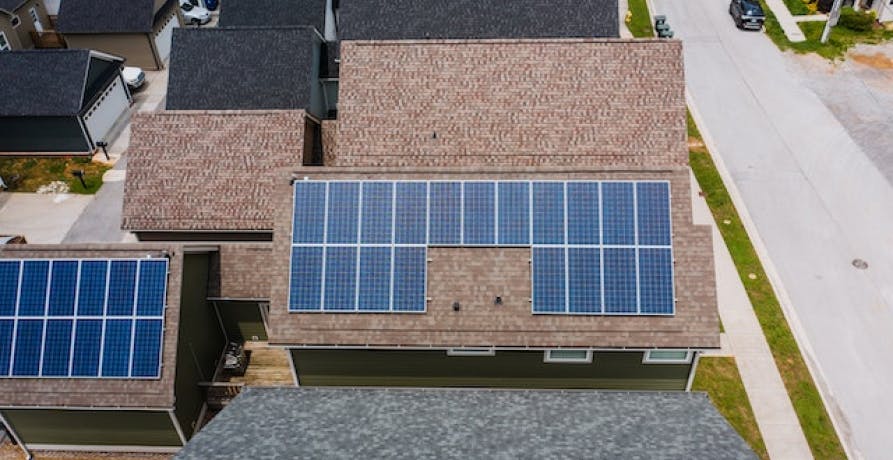ESG / CSR
Industries
Renewable Energy Certificates (RECs): Definition and Legal Basis



Especially with a newfound energy crisis on our hands this winter, finding sources for renewable energy has never been more important in the midst of the fight against climate change.

Whether it comes from wind turbines or solar power, RECs are involved in the creation and distribution of renewable energy and electricity. How do RECs work to help with energy conservation and electricity distribution?
What are RECs?
A REC, otherwise known as a renewable energy certificate – is pronounced like, “wreck” when referred to in its more common, abbreviated state. REC is a representation for the energy market to represent REC (pronounced: rěk, like wreck), is a market-based instrument that represents that represents the environmental properties of the production of a renewable energy resource, such as a solar panel or wind turbine.
RECs can be awarded when a renewable energy source can generate one megawatt-hour, or MWh for short, of electricity to an electricity grid entirely from a clean energy source. RECs can help these renewable energy sources demonstrate their certifications through data, the type of renewable energy they provide, nameplate capacity of the project, the name of the renewable energy project itself, provide the project with an identification number, how the project is interconnected with other renewable energy or sustainable projects, and the emissions rate of the renewable energy source.
👉However, these benefits could differ from REC to REC – and they are subject to change given the type of renewable energy source project.
RECs are always involved when creating renewable energy and electricity, even if one is not aware. This is because RECs were also created in order to buy and sell renewable electricity – the concept is similar to viewing your bank statements online. Each time renewable energy is sold, the transactions are kept on a recording for future viewing.
👉RECs ultimately act as the currency for the renewable energy market.
How else do RECs work?
How do RECs work?
When you plug in your iPhone to charge it, have you ever wondered where your electricity is coming from?
It’s next to impossible to determine exactly where the electricity is coming from when you plug in your electric toothbrush or hair dryer into the electricity socket, or if the electricity was produced from a high emitting, finite resource – but RECs can help to change that potential guilt by allowing people to own small parts of renewable energy production and usage. This is because RECs allow users of electricity to own a small part of the “renewable energy” reserves that come from a shared grid. Therefore, if any part of the grid is supplied with electricity made from renewable energy – owners of an RECs will get first priority to use that renewable energy.

No matter where the electricity comes from (i.e., coal, gas) – it’s coming from the electricity grid. However, more and more people are opting to ensure that their electricity comes from renewable energy sources, and are opting for RECs instead to ensure that they are reducing their non-renewable energy consumption.
This is what RECs help people to accomplish. Whoever purchases and owns a REC, owns a little part of that renewable energy – and can claim all the benefits of that megawatt hour they have acquired. It’s kind of like the stock market: someone who owns a little bit of Apple, is benefiting from that stock-ownership by making a slight profit – even if it isn’t lucrative as someone who owns a larger percentage of Apple.

Since RECs help make green power a reality of consumers of electricity, RECs can help to avoid greenhouse gas emissions across the United States, and can be bought and used from anywhere in the country – making RECS a great and easy way for people to reduce their carbon footprint and help fight against climate change.
RECs can be created from several different types of renewable energy sources: such as wind, solar, hydropower, biomass, and geothermal energy. These energies aren’t finite like coal or natural gas, meaning RECs represent energy that can also be replenished – and help to promote the concept that a transition to clean energy is indeed possible.
RECs clearly present a lot of consumer and environmental benefits, but does their legality make them less appealing to others interested in RECs?
What is the legal basis for RECs?
RECs are completely legal to use, as RECs are viewed as the accepted legal method to exchange and obtain renewable energy throughout the market – but their level of support differentiates from state to state. RECs are predominantly viewed as the mechanism used for individuals and businesses to exchange electricity throughout the U.S. electricity market for both voluntary and compulsory purposes.
Some may view RECs as “sketchy” as they aren’t controlled or regulated by a single organization or the federal government – but they are indeed the legally approved manner for those seeking to easily sell or buy renewable energy without installing solar panels or wind turbines themselves.
In fact, 36 states recognize that RECs are the most viable way to sell and record renewable electricity and 35 states condone the value of RECs to help promote renewable energy to the common electricity grid and the development of Renewable Portfolio Standards – otherwise known as RPSs. While not all of the states have set regulations or have confirmed the efforts of RECs, none of them have contradicted them either.
According to the EPA, RECs are continuing to grow as the most commonly recognized currency for renewable energy in the market. Seeing as RECs are growing in popularity, it’s understandable to wonder how they are generated.
How are RECs created?
RECs may differ depending on the state an energy user acquires their REC in, as states develop their own individual renewable energy portfolio standards. For instance, a state can demand that a certain percentage of electricity sold to their state must come from renewable energy sources, or be produced themselves. However, these individual prerequisites aside – a REC is still provided depending on the amount of energy the renewable energy source generates per megawatt-hour. For instance, if a solar panel generates 10 megawatts of electricity, the solar panel company has 10 credits to keep for themselves or sell to others who want to use that renewable energy.
👉In short, any mechanism that produces renewable energy can simultaneously generate RECs. Solar panels and wind turbines are creating energy that can be used individually, or generate credits to be sold and used by another party.
RECs are broken down into two different buyers: voluntary credit buyers and compliance buyers. Compliance buyers are entities that must use a certain percentage of electricity derived from renewable resources, for instance – if the state of California requires that X percentage of a companies electricity must come from renewable resources, that many of those companies may refer to purchasing RECs instead of installing wind turbines or solar panels for individual use. On the other hand, voluntary credit buyers are individuals or businesses that truly want to reduce their carbon footprint, and acquire RECs for the sake of improving the current environmental circumstances – which aren’t good.
What are the other positive elements to using RECs?
What are the benefits of REC?
RECs are most notably beneficial to the environment, as they provide individuals and renewable energy producers with proof that they are creating or using renewable energy to be provided on the same electricity grid that is powered by non-renewable energy. This allows individuals or businesses to switch to the use of clean energy without the need to install solar panels or wind turbines, which can often be expensive and time consuming – ultimately deterring people from switching to the use of clean energy in the first place. RECs simplify the process and make reducing greenhouse gas emissions more accessible to anyone who wants to fight against climate change and implement more sustainable practices.
In addition to RECs providing individuals and companies alike with an easier way to reduce their carbon footprint, RECs also helps to encourage the shift to the use of renewable energy by being a predominant part of the energy market itself. Basically, RECs not only directly help businesses meet their environmental targets by reducing emissions – but RECs help to promote the value of clean energy across the rest of the industry.

People who create and use RECs are benefitting the future of energy usage as well – by supporting the renewable energy market, and showing others how using renewable energy doesn’t have to be time consuming or costly as many believe solar panels are the only avenue to accomplish this.
Are RECs the best way for individuals and companies to reduce their emissions?
How are RECs different from Carbon Offsets?
Many people associated RECS and carbon offsetting projects together seeing that they both allow for positive environmental change and the opportunity to reduce greenhouse gas emissions. However, carbon offsets and RECs aren’t exactly the same thing.
While both carbon offsetting and RECs allow people to reduce their carbon footprint and prevent emissions, they work in different ways to fight against climate change. Offsets account for a certain amount of emissions to be reduced or avoided in compensation for a previously high carbon emitting activity, such as travel, whereas RECs work to prevent greenhouse gas emissions at the source – as those with RECs certificate will avoid using the initial finite resource in the first place. However, the thing about RECs is that the electricity generated from non-renewable resources is still made and provided on the electricity grid – which is why so many people see offsets and RECs to be the same.
RECs and offsets should be used simultaneously for any company or individual seeking to go green, but they aren’t interchangeable. One is not necessarily more impactful in reducing emissions than the other, but it is beneficial to realize that RECS can help to encourage the future use of renewable energy whereas offsets are used to counterbalance a previous activity that caused harm to the environment

That being said, are RECs worth the extra effort to acquire if carbon offsets are just as effective in helping to mitigate excessive emissions?
Are RECs worth acquiring?
RECs are absolutely worth both acquiring and selling. They help the U.S. to reduce their greenhouse gas emissions in a convenient manner, and help promote the importance of both the production and use of renewable energy across the country – and subsequently, the world.
However, RECs shouldn’t be the only thing that companies do that reduce their carbon footprint – but rather one part in their toolbox used to help fight against climate change. Striving to acquire ISO certifications, joining sustainability programs like the UNGC’s Agenda 2030, seeking green investments, and offsetting residual emissions through carbon offsetting projects and carbon credits are just as important.
The fight against climate change is a collective effort, where several different approaches should be taken to reduce the globe’s surface temperature. RECs can’t accomplish this alone, but it’s a great playing card to keep up your sleeve when making your game plan to go green.
What about Greenly?
If reading this article about renewable energy certificates, otherwise known as RECs – has made you interested in reducing your carbon emissions to further fight against climate change – Greenly can help you!
Greenly can help you make an environmental change for the better, starting with a carbon footprint assessment to know how much carbon emissions your company produces.
PRI strives for all of those involved to go above and beyond, but when it comes to getting started – the least you can do is set out to learn the bare minimums. For example, the three requirements for first time signatories include presenting an investment policy that incorporates more than 50% of the assets under management (AUM) to adhere to the current PRI values, recruiting additional staff to help with future investment policies, and striving to perform at a senior-level in terms of accountability for future, responsible investments.


